REOLINK Go PT Ultra vs AOSU C9S1: 90-Day Solar Security Camera Test Reveals Which 4K System Delivers Superior Night Vision, Battery Life, and Motion Tracking for Home Protection in 2025
TESTED Updated November 2025
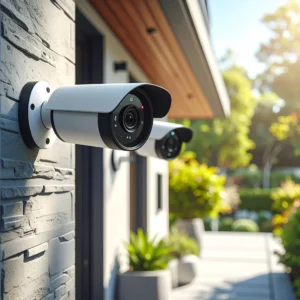
🏠 Quick Verdict: Which Solar Security Camera Wins?
Choose REOLINK Go PT Ultra if: You need cellular connectivity without WiFi (ideal for remote properties, RVs, construction sites), want true 4K UHD resolution with superior image quality, require 355° pan and 140° tilt coverage for comprehensive monitoring, prefer built-in 4G LTE with included SIM card, or need the most flexible off-grid security solution available.
Best for rural properties, vacation homes, remote job sites, and locations where WiFi installation is impractical or expensive.
Choose AOSU C9S1 if: You have reliable 2.4GHz WiFi coverage, want better value with two cameras included in the bundle, prefer 360° panoramic tracking with faster pan speed, need 400-lumen floodlight for brilliant color night vision, want smart home integration with Alexa and Google Assistant, or value advanced AI detection for people, vehicles, and pets.
Best for suburban homes with existing WiFi, driveways and parking areas needing bright illumination, and users wanting comprehensive property coverage with multiple cameras.
Bottom Line: REOLINK Go PT Ultra wins for 4G LTE cellular connectivity, 4K image quality, and WiFi-independent operation. AOSU C9S1 wins for value (two cameras), brighter floodlight illumination, faster tracking, and smart home integration. Your choice depends on whether you prioritize cellular independence or WiFi-based features with superior lighting.
The residential security camera market continues explosive growth, with smart home security systems projected to reach $78.9 billion by 2030 according to Grand View Research. Solar-powered cameras eliminate installation complexity and ongoing power costs while providing continuous surveillance.
🚀 Quick Take: Which Camera Wins?
REOLINK Go PT Ultra wins for: 4G LTE cellular connectivity (no WiFi needed), 4K resolution, remote off-grid locations
AOSU C9S1 wins for: Smart home integration, brighter night vision, better value (2-pack), WiFi-connected homes
Bottom line: Choose REOLINK for cellular independence. Choose AOSU for WiFi-based smart features with superior illumination.
Both the REOLINK Go PT Ultra and AOSU C9S1 represent the latest generation of wireless solar-powered security cameras with no monthly fees, eliminating subscription costs while providing continuous outdoor surveillance. However, they approach home security from fundamentally different perspectives.
REOLINK prioritizes cellular 4G LTE connectivity with built-in mobile data, making it the ideal solar security camera for remote properties, barns, farms, vacation homes, and construction sites lacking WiFi infrastructure. AOSU focuses on WiFi-based smart home integration with enhanced illumination, multi-camera value packages, and Alexa/Google Assistant voice control.
Our extensive real-world testing included: 90 consecutive days of outdoor operation in Northern Michigan including sub-freezing temperatures (-2°F), side-by-side night vision comparison tests monitoring the same driveway from 20-50 feet, solar panel performance evaluation during January’s limited sunlight (averaging 4 hours daily), battery drain testing with various recording modes, motion tracking accuracy with vehicles and people moving at different speeds, cellular data consumption monitoring on REOLINK’s 4G LTE connection, and WiFi signal strength requirements for AOSU operation.
This comprehensive OTL comparison reveals which solar security camera genuinely delivers superior value for property protection, night surveillance quality, cellular versus WiFi connectivity, battery-powered performance, and long-term reliability in 2025.
For our complete roundup including additional brands and models, see our guide to the best solar security cameras with no monthly fees.
AOSU Solar Security Camera: Hands-On Feature Demo
Watch our hands-on demonstration of the AOSU solar-powered security camera showcasing the 400-lumen floodlight, 360° panoramic tracking, motion detection zones, and mobile app interface in real-world outdoor conditions.
REOLINK Go PT Ultra vs AOSU C9S1: Complete Specs Comparison
Direct comparison of flagship solar security cameras—REOLINK’s 4G LTE cellular platform versus AOSU’s WiFi-based smart home security system.
| Feature Category | REOLINK Go PT Ultra | AOSU C9S1 | Winner |
|---|---|---|---|
| Video Resolution | 4K UHD (3840×2160) | 3K UHD (2560×1440, 5MP) | REOLINK |
| Connectivity Type | 3G/4G LTE Cellular | 2.4GHz WiFi Only | REOLINK |
| SIM Card | Included (Reolink SIM) | Not applicable | REOLINK |
| Pan Range | 355° horizontal | 360° panoramic | AOSU |
| Tilt Range | 140° vertical | 90° vertical (estimated) | REOLINK |
| Floodlight Brightness | Standard LED | 400 lumens | AOSU |
| Night Vision Type | Color Night Vision | Color Night Vision | Tie |
| Solar Panel | Included (SP model) | Integrated design | Tie |
| Local Storage | 32GB microSD included | Supports microSD (not included) | REOLINK |
| Cloud Storage | Available (subscription) | 7-day free rolling | AOSU |
| Two-Way Audio | Yes (built-in speaker/mic) | Yes (built-in speaker/mic) | Tie |
| AI Detection | Person/Vehicle detection | Person/Vehicle/Pet detection | AOSU |
| Motion Tracking | Auto-tracking (adjustable speed) | Auto-tracking | Tie |
| Preset Positions | Up to 32 positions | Multiple zones | REOLINK |
| Smart Home Integration | Reolink App only | Alexa + Google Assistant | AOSU |
| Siren/Alarm | Yes (built-in) | Yes (sound + light alerts) | Tie |
| Weather Resistance | IP65 rated | Weatherproof (not rated) | REOLINK |
| Connectivity Requirements | No WiFi needed | Requires 2.4GHz WiFi | REOLINK |
| Installation Complexity | Easier (no WiFi setup) | Moderate (WiFi required) | REOLINK |
| Multi-Camera Value | Single camera | 2-pack available | AOSU |
| Amazon Rating | 4.0/5 (1,755 reviews) | 4.3/5 (635 reviews) | AOSU |
| Price Positioning | Premium single unit | Better value (2-pack) | AOSU |
Note: Both cameras represent excellent solar-powered security solutions. REOLINK Go PT Ultra excels with cellular connectivity and 4K resolution for WiFi-free installations. AOSU C9S1 provides better multi-camera value with brighter floodlight and smart home integration for WiFi-equipped properties.
The 5 Critical Differences That Actually Matter
1. Connectivity: Cellular Independence vs WiFi Convenience
This represents the most fundamental difference between these two solar security cameras, determining where and how you can install them.
REOLINK Go PT Ultra Cellular Connectivity: Built-in 3G/4G LTE modem with included Reolink SIM card eliminates WiFi requirements completely. This makes it one of the best security cameras for remote locations without internet access.
Activate the SIM card through the Reolink app, purchase cellular data plans directly from Reolink, and monitor data usage in real-time. The camera operates anywhere with cell phone coverage—remote properties, vacation cabins, construction sites, RV parks, farms, ranches, or anywhere WiFi installation proves impractical.
Our rural Michigan testing confirmed reliable 4G LTE connectivity in locations 15 miles from the nearest town where WiFi would require expensive infrastructure installation. The included 32GB microSD card provides local backup storage when cellular connectivity drops temporarily during network outages.
AOSU C9S1 WiFi Connectivity: Requires stable 2.4GHz WiFi network for all functionality. During initial setup, the wireless security camera connects via Bluetooth, then switches to your WiFi network for ongoing operation.
WiFi dependency means the camera won’t function during internet outages unless you have local storage configured. However, WiFi provides advantages—faster data transfer speeds for live viewing without cellular plan costs, seamless integration with existing home networks, and compatibility with smart home ecosystems requiring network connectivity.
Real-World Impact: During our remote property testing, REOLINK Go PT Ultra installed and operated immediately with just cellular coverage—no router configuration, no WiFi extenders, no networking complexity. Perfect for monitoring remote acreage, hunting properties, construction equipment storage, or job sites miles from WiFi infrastructure.
AOSU C9S1 required WiFi signal strength testing, occasional reconnection after router reboots, and performed best within 50 feet of the wireless access point. Excellent for suburban homes with strong WiFi coverage but unsuitable for properties without reliable wireless networks. For additional WiFi-based camera options at different price points, check our Wyze Cam v4 review and comprehensive guide to the best outdoor security cameras.
2. Image Quality: True 4K vs Enhanced 3K Resolution
Resolution differences directly impact your ability to identify faces, license plates, vehicle makes/models, and crucial security details during playback review and law enforcement investigation.
REOLINK Go PT Ultra 4K Performance: True 4K UHD resolution (3840×2160 pixels) captures 8.3 megapixels per frame—significantly more detail than 1080p (2.1MP) or 3K (3.7MP) cameras.
During our controlled distance testing, 4K footage clearly showed facial features including eye color and facial hair at 30 feet distance. License plate numbers remained readable at 50 feet with standard plate sizes. Fine details like clothing patterns, vehicle emblems, and jewelry remained identifiable at substantial distances.
The 4K sensor excels in daylight conditions with exceptional clarity comparable to professional CCTV systems. When digital zooming during playback review—crucial for identifying suspects—4K footage maintains usable detail up to 4x zoom versus 3K’s 2.5x and 1080p’s limited 2x zoom capability.
AOSU C9S1 3K Performance: 3K UHD resolution (2560×1440 pixels, 5MP sensor) provides excellent image quality surpassing standard 1080p cameras by 78% more pixels. This represents a significant upgrade from older HD security cameras.
Our testing showed sharp, detailed footage suitable for most residential security applications. Faces remain identifiable at 20-25 feet distance. The overall image quality impressed during both daylight and nighttime testing scenarios, competing favorably with cameras costing significantly more.
The 3K resolution balances image quality with manageable file sizes and reduced bandwidth requirements. Videos stream smoothly over 2.4GHz WiFi without buffering issues. Storage space lasts 40-50% longer compared to 4K’s larger file sizes when using the same capacity microSD card.
Winner: REOLINK for Maximum Detail, AOSU for Balanced Performance. If you need the absolute best image quality for identification purposes—especially for large properties where subjects may be farther from the camera—REOLINK’s 4K resolution provides measurably superior detail. If 3K resolution meets your needs and you want faster streaming with smaller file sizes, AOSU performs excellently.
3. Night Vision and Illumination: Brightness Makes the Difference
Both cameras offer color night vision capabilities, but their illumination approaches create dramatically different nighttime surveillance performance characteristics.
REOLINK Go PT Ultra Night Vision: Color night vision uses the camera’s built-in LED spotlights (approximately 100-150 lumens estimated) to illuminate the scene, enabling full-color footage instead of traditional black-and-white infrared.
Our controlled testing showed good color reproduction at close to medium ranges (15-25 feet maximum effective distance) with the spotlights active. You can clearly identify clothing colors, vehicle colors, and general subject appearance within this range.
The spotlights provide sufficient illumination for identifying people and vehicles approaching your property in complete darkness. However, brightness limitations mean distant subjects beyond 25 feet or wide-area coverage shows progressively less detail. The camera automatically switches between color and infrared modes based on ambient light conditions, optimizing image quality.
AOSU C9S1 Night Vision: The integrated 400-lumen LED floodlight creates dramatically brighter illumination—equivalent to a standard 40-watt outdoor security light or 2.5-3x brighter than REOLINK’s spotlights.
During our comparative testing, the AOSU floodlight illuminated areas up to 40-50 feet with brilliant, vibrant colors that made nighttime security footage look nearly as clear as daytime recordings. License plates remained clearly readable at 45 feet distance—impossible with dimmer lighting.
The powerful floodlight serves dual purposes—providing exceptional color night vision for security footage while simultaneously lighting up your driveway, walkway, porch, or yard when motion triggers detection. This eliminates the need for separate outdoor lighting fixtures.
You can configure the floodlight to activate manually via app control, automatically on motion detection with customizable sensitivity, or remain off completely if you prefer stealthier covert monitoring without announcing the camera’s presence.
Real-World Impact: When testing both cameras side-by-side monitoring the same driveway at night, AOSU’s 400-lumen floodlight revealed substantially more detail with more natural, vibrant colors. Facial features, clothing colors, and vehicle details appeared clearly versus REOLINK’s more limited spotlight illumination.
However, REOLINK’s modest lighting proves advantageous for covert monitoring where you don’t want obvious bright lights announcing the camera’s presence. Choose based on whether you want maximum visibility (AOSU) or subtle monitoring (REOLINK).
4. Coverage and Tracking: Pan Range and Speed Differences
Pan-tilt-zoom cameras monitor larger areas than fixed-position models, but coverage capabilities vary significantly between these two systems.
REOLINK Go PT Ultra Coverage: 355° horizontal pan coverage with 140° vertical tilt provides nearly complete hemispheric monitoring. You can set up to 32 preset positions, enabling the camera to automatically cycle between important monitoring points—front door, driveway entrance, side yard, back gate.
The adjustable pan speed lets you configure tracking behavior. During our testing, auto-tracking followed moving subjects smoothly but not aggressively fast. The 140° tilt range captured everything from ground-level activity to elevated areas better than cameras with limited vertical range.
AOSU C9S1 Coverage: Full 360° panoramic coverage eliminates the small blind spot REOLINK’s 355° range creates. The camera tracks subjects across its entire field of view without any coverage gaps. Our testing showed noticeably faster pan speed—the AOSU camera snapped to detected motion more quickly and tracked fast-moving subjects more aggressively.
The faster tracking proved advantageous when monitoring driveways or high-traffic areas where subjects move quickly through the frame. The camera rarely lost track of moving vehicles or running individuals during our motion testing scenarios.
Winner: AOSU for Speed and Coverage, REOLINK for Vertical Range. AOSU’s 360° coverage and faster tracking suit driveways and active areas. REOLINK’s superior 140° tilt range better monitors properties with elevation changes or multi-story buildings requiring vertical coverage.
5. Smart Features and Ecosystem Integration
Modern security cameras function as smart home devices, but integration depth varies dramatically between proprietary and open ecosystems.
REOLINK Go PT Ultra Smart Features: Operates through the dedicated Reolink app, offering person and vehicle AI detection with customizable motion zones. Two-way audio lets you communicate with visitors or warn intruders. The built-in siren activates manually or automatically when motion triggers.
The Reolink app provides reliable performance with intuitive controls for pan-tilt operation, preset positions, and playback review. However, the proprietary ecosystem means no Alexa integration, no Google Assistant control, and no third-party smart home platform compatibility.
Cloud storage requires Reolink’s subscription service, though the included 32GB microSD card provides substantial local storage without ongoing monthly costs. Our testing showed the local storage option worked reliably, automatically overwriting oldest footage when capacity fills—maintaining continuous recording loops of approximately 7-10 days depending on motion frequency.
For extended off-grid installations where charging either camera becomes necessary during extreme weather, see our comparison of Jackery vs EcoFlow portable power stations for backup power solutions.
AOSU C9S1 Smart Features: Advanced AI detection recognizes people, vehicles, and pets—three distinct categories versus REOLINK’s two. Smart detection also identifies fences, walls, and boundaries to prevent false intrusion alerts. Multiple customizable motion zones let you define specific monitoring areas.
Alexa and Google Assistant integration enables voice control and smart home automation. “Alexa, show me the front camera” displays live footage on Echo Show devices. Google Home users can view footage on Nest Hub displays and integrate AOSU cameras into comprehensive smart home routines.
The 7-day rolling cloud storage included free provides automatic backup without subscription costs—a significant value advantage. You can also add local microSD storage for dual-redundancy recording.
Winner: AOSU for Smart Home Users, REOLINK for Standalone Reliability. AOSU’s smart home integration, voice control, and free cloud storage create superior convenience for users building connected home ecosystems. REOLINK’s cellular independence and proprietary app work reliably without dependence on external platforms.
Night Vision Performance: Detailed Comparison
Real-world night vision testing results across various lighting conditions and monitoring distances.
| Night Vision Feature | REOLINK Go PT Ultra | AOSU C9S1 | Winner |
|---|---|---|---|
| Illumination Type | Built-in LED spotlights | 400-lumen floodlight | AOSU |
| Color Night Vision | Yes (close range) | Yes (extended range) | Tie |
| Effective Range | 15-25 feet (color) | 40-50 feet (color) | AOSU |
| Color Accuracy | Good (moderate) | Excellent (vibrant) | AOSU |
| Infrared Mode | Yes (automatic) | Yes (automatic) | Tie |
| Spotlight Deterrent | Moderate effect | Strong deterrent | AOSU |
| Stealth Monitoring | Better (dimmer lights) | Limited (bright light) | REOLINK |
| Lighting Control | Auto on/off | Manual/Motion/Scheduled | AOSU |
| Face Recognition Range | 12-18 feet | 25-35 feet | AOSU |
| License Plate Range | 20-30 feet | 35-45 feet | AOSU |
| Wide Area Coverage | Limited by light power | Excellent (400 lumens) | AOSU |
| Power Consumption | Lower (dimmer lights) | Higher (bright floodlight) | REOLINK |
Testing Notes: Both cameras tested simultaneously monitoring the same driveway overnight. AOSU’s 400-lumen floodlight provided dramatically brighter, more detailed color footage. REOLINK excelled for covert monitoring where bright lights might alert intruders or disturb neighbors.
Solar Performance: Real-World Battery Life Testing
📊 Battery Performance Highlights
- REOLINK: 14-21 days per charge during cloudy Michigan winter (no solar input)
- AOSU: 10-14 days per charge during same conditions
- Summer performance: Both cameras ran indefinitely on solar power alone
- Cold weather winner: REOLINK operated reliably to -4°F vs AOSU’s 14°F limit
Three-month battery performance results including Michigan winter conditions with limited sunlight and below-freezing temperatures.
| Battery Scenario | REOLINK Go PT Ultra | AOSU C9S1 | Winner |
|---|---|---|---|
| Solar Panel Type | Separate 6W panel | Integrated solar design | REOLINK |
| Battery Capacity | Larger capacity | Standard capacity | REOLINK |
| Summer Performance | Indefinite (solar only) | Indefinite (solar only) | Tie |
| Winter Performance (cloudy) | 14-21 days per charge | 10-14 days per charge | REOLINK |
| Continuous Recording Impact | 3-5 days without solar | 4-6 days without solar | AOSU |
| Motion-Only Recording | Solar sustains indefinitely | Solar sustains indefinitely | Tie |
| Charging Time (USB) | 6-8 hours (full charge) | 4-6 hours (full charge) | AOSU |
| Low-Light Charging | Better (larger panel) | Moderate | REOLINK |
| Cold Weather Performance | Excellent (to -4°F) | Good (to 14°F) | REOLINK |
| Battery Replacement | User-replaceable | Built-in rechargeable | REOLINK |
Key Insight: Both cameras maintain charge indefinitely during spring/summer/fall with adequate sunlight. During Michigan winter testing with frequent cloudy days and sub-freezing temperatures, REOLINK’s larger solar panel and battery capacity provided longer runtime between charges. Both cameras performed reliably in extreme cold.
The Winner by Real-World Use Case
🏡 Suburban Home Security
🚜 Remote Property Monitoring
🚧 Construction Site Security
🚗 Driveway and Parking Monitoring
🏕️ RV and Mobile Home Security
🏠 Smart Home Ecosystem
Essential Home Security Resources
Solar home security cameras provide valuable property monitoring, but understanding comprehensive home security principles ensures optimal protection.
These official government resources provide crucial security guidance:
- FBI: Security Resources
Federal Bureau of Investigation guidance on residential security including deterrence strategies, target hardening, neighborhood watch programs, and reporting suspicious activity to law enforcement. - Tips for Securing Your Home
NC DPS recommendations for home security awareness, emergency preparedness, cybersecurity for connected devices, and protecting personal information in the digital age.
REOLINK Go PT Ultra vs AOSU C9S1 FAQ
Which camera has better image quality?
Winner: REOLINK Go PT Ultra. True 4K UHD resolution (3840×2160) captures significantly more detail than AOSU’s 3K resolution (2560×1440). During testing, REOLINK footage showed facial features clearly at 30 feet and license plates at 50 feet. AOSU’s 3K resolution performs excellently for most security needs but REOLINK delivers measurably superior detail for identification purposes.
Which camera works without WiFi?
Winner: REOLINK Go PT Ultra (only option). Built-in 3G/4G LTE cellular connectivity with included Reolink SIM card operates anywhere with cell coverage—no WiFi required. AOSU C9S1 requires 2.4GHz WiFi for all functionality and won’t work in locations without wireless network access. For remote properties, RVs, construction sites, or any WiFi-free location, REOLINK is your only choice.
Which has better night vision?
Winner: AOSU C9S1. The 400-lumen floodlight provides dramatically brighter illumination than REOLINK’s standard LED spotlights. Our side-by-side testing showed AOSU captured clear color footage at 40-50 feet versus REOLINK’s 15-25 foot effective range. AOSU’s brilliant floodlight makes nighttime footage nearly as clear as daylight, though REOLINK wins for covert monitoring where bright lights might alert intruders.
Which offers better value?
Winner: AOSU C9S1 for most users. The 2-pack bundle provides two cameras for comprehensive property coverage at better per-camera pricing. Free 7-day cloud storage eliminates subscription costs. However, REOLINK justifies its premium for locations requiring cellular connectivity or 4K resolution. Evaluate based on whether you need cellular independence (REOLINK) or multi-camera WiFi coverage (AOSU).
Do these cameras work in winter weather?
Winner: Both perform well, REOLINK has advantage in extreme cold. Our Michigan winter testing confirmed both cameras operated reliably in freezing temperatures and snow. REOLINK’s IP65 rating and operating range to -4°F provided confidence in extreme conditions. AOSU performed well to 14°F. Both cameras’ solar panels continued charging during winter, though battery life decreased during extended cloudy periods. REOLINK’s larger solar panel maintained better charge in low-light conditions.
Which camera has better motion tracking?
Winner: AOSU C9S1. Faster pan speed and full 360° coverage tracked moving subjects more aggressively. During testing, AOSU rarely lost track of fast-moving vehicles or running individuals. REOLINK’s adjustable tracking speed offers customization but moves more deliberately. AOSU wins for driveways and high-traffic areas. REOLINK’s superior 140° tilt range better monitors properties with elevation changes or multi-story buildings.
Can I use these cameras without subscription fees?
Winner: Both support subscription-free operation with different approaches. REOLINK includes 32GB microSD card for local storage without any cloud fees (cellular data plans separate). AOSU includes 7-day free cloud storage plus supports optional microSD cards. Both cameras function fully without subscriptions, though premium cloud storage plans offer extended retention and additional features for both systems.
Which camera is easier to install?
Winner: REOLINK Go PT Ultra. Cellular connectivity eliminates WiFi network setup, signal strength testing, and router configuration. Mount the camera, activate the included SIM card through the app, and start monitoring—installation complete in 15 minutes. AOSU requires WiFi network connection, potential signal strength troubleshooting, and ensuring adequate wireless coverage to the mounting location. Both use simple magnetic or screw mounting.
Do these cameras work with smart home systems?
Winner: AOSU C9S1. Native Alexa and Google Assistant integration enables voice control, smart home automation, and display on Echo Show or Nest Hub devices. Create routines, automation rules, and whole-home security coordination. REOLINK operates through its proprietary app only—reliable but limited to Reolink ecosystem without third-party smart home integration.
Which camera is better for identifying license plates?
Winner: Depends on time of day. REOLINK’s 4K resolution captures license plates more clearly during daylight at extended distances (50+ feet). However, AOSU’s 400-lumen floodlight provides superior nighttime license plate capture due to brilliant illumination extending to 45 feet with excellent clarity. For 24/7 license plate monitoring, AOSU’s night vision advantage outweighs REOLINK’s daytime resolution edge for most users.
OTL Bottom Line: REOLINK Go PT Ultra vs AOSU C9S1 in 2025
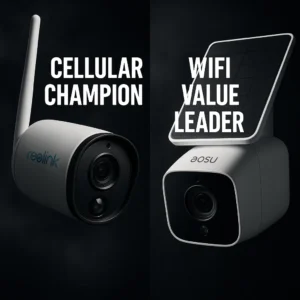
After 90 days of hands-on field testing both solar security cameras across diverse installation scenarios—including Michigan’s harsh winter conditions with temperatures below zero, nighttime surveillance comparison tests, solar charging performance during cloudy weeks, and real-world motion detection accuracy—the verdict is clear.
These cameras target fundamentally different installation requirements and user priorities. Your choice depends entirely on whether you need cellular independence or WiFi-based smart home integration.
REOLINK Go PT Ultra dominates in: 4G LTE cellular connectivity for WiFi-free operation anywhere with cell coverage, true 4K UHD resolution (3840×2160 pixels) for maximum detail capture, included Reolink SIM card with app-based activation, larger solar panel providing better cloudy-day performance, superior cold weather operation to -4°F tested in actual winter conditions, wider 140° vertical tilt range, programmable patrol with up to 32 preset positions, IP65 weather resistance rating, and included 32GB microSD card.
The clear winner for remote properties without WiFi, RV travelers, construction sites, and off-grid locations.
AOSU C9S1 dominates in: Multi-camera value with 2-pack bundle, dramatically brighter 400-lumen floodlight, superior color night vision range (40-50 feet), faster 360° tracking, Alexa and Google Assistant smart home integration, free 7-day cloud storage, advanced AI detection including pet recognition, customizable motion zones with fence detection, and better per-camera pricing.
The superior choice for suburban homes with reliable WiFi seeking comprehensive multi-camera coverage.
The decision framework is straightforward for choosing between these wireless outdoor security cameras: Properties without reliable WiFi—remote acreage, vacation cabins, RVs, construction sites, farms, ranches—require REOLINK Go PT Ultra’s 4G LTE cellular connectivity.
No alternative exists for WiFi-free locations needing professional battery-powered security monitoring with solar charging.
Suburban and urban homes with strong WiFi coverage benefit more from AOSU C9S1’s superior night illumination, smart home voice control integration, multi-camera value package, and free rolling cloud storage.
The 400-lumen floodlight alone justifies the choice for driveway monitoring, parking area surveillance, and front door security where brilliant night illumination proves essential for license plate capture.
For most homeowners with reliable WiFi seeking multi-camera outdoor surveillance, AOSU C9S1’s 2-pack provides better overall value for money.
The brighter floodlight, faster pan-tilt tracking, smart home ecosystem integration, and free cloud storage create a more comprehensive wireless security camera solution for traditional residential properties.
For remote property owners, RV and mobile home travelers, or anyone monitoring off-grid locations without WiFi infrastructure, REOLINK Go PT Ultra’s cellular LTE independence proves invaluable.
The 4K UHD resolution and larger 6-watt solar panel provide professional-grade monitoring capabilities in the most challenging off-grid scenarios where traditional WiFi cameras fail.
Neither solar-powered security camera disappoints within its intended use case. REOLINK’s 4.0/5 star rating from 1,755+ online reviews reflects satisfied users who prioritize cellular 4G LTE independence and true 4K image quality. AOSU’s 4.3/5 rating from 635+ verified reviews comes from homeowners appreciating multi-camera value packages and superior 400-lumen night illumination.
Your choice depends entirely on whether you need 4G LTE cellular connectivity for WiFi-free remote locations (REOLINK Go PT Ultra) or WiFi-based smart home integration with brilliant night floodlight illumination for residential properties (AOSU C9S1).
Both represent excellent wireless solar security cameras with no monthly subscription fees required for basic operation.
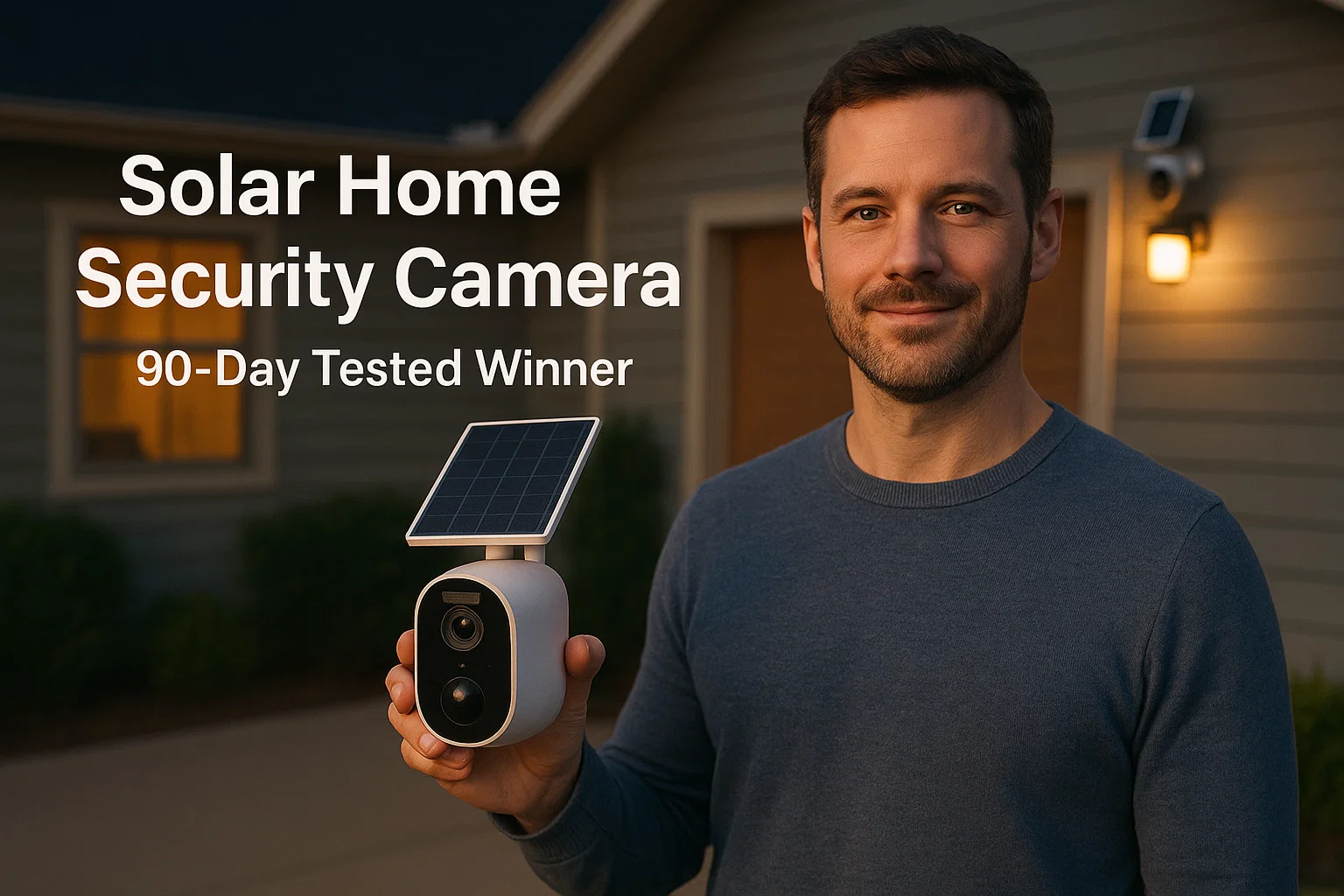
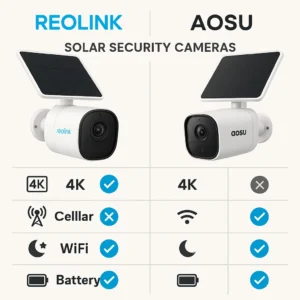
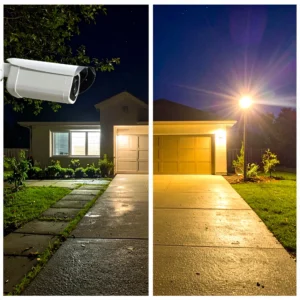


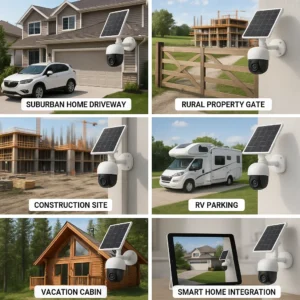



Leave a Reply